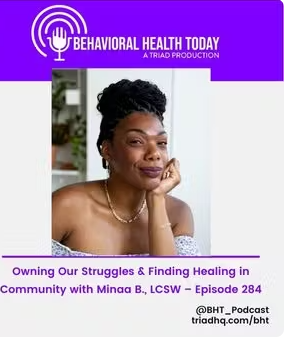7 Treatment Methodologies that All Therapists Should Consider
 Therapy isn’t just about talking anymore. From altering subconscious states to tracking eye movements to getting up to dance, there are countless nontraditional methods that can successfully improve a client’s emotional and physical health. Here are 7 alternative treatment methodologies that all therapists should consider.
Therapy isn’t just about talking anymore. From altering subconscious states to tracking eye movements to getting up to dance, there are countless nontraditional methods that can successfully improve a client’s emotional and physical health. Here are 7 alternative treatment methodologies that all therapists should consider.
Hypnotherapy
Hypnotherapy is a legitimate method that works, and it’s been recognized for over 60 years by the British Medical Association and the American Medical Association. It’s used everywhere from Stanford in California to Mount Sinai Beth Israel in New York.
With hypnotherapy, the practitioner guides a patient into a hypnotic altered state of consciousness. The therapist induces a “trance state,” like the state you experience when you’re engrossed in a good movie or book. In the hypnotic state, the patient can easily let go and relax.
Once the conscious mind is quiet, the therapist can access powerful parts of the patient’s subconscious. Therapists uncover motivations and repressed memories. Hypnotherapy can relieve many symptoms, including depression and even migraines.
Cognitive Behavioral Therapy (CBT)
Cognitive Behavioral Therapy (CBT) is a short-term, practical psychotherapy treatment. CBT is based on the idea that it’s the meaning we give events (“I’m a complete failure at work”), and not the events themselves, that upset us. Negative thoughts can block us from moving forward (“I can’t go to work today”) or changing behaviors.
CBT focuses on setting goals to solve problems. Therapists work collaboratively with patients to set treatment goals in structured sessions. CBT can be effective for many issues, including anxiety, chronic pain, depression, phobias, and sexual and relationship problems.
Dialectical Behavior Therapy (DBT)
Dialectical Behavior Therapy (DBT) is a cognitive-behavioral approach for borderline personality disorder. It’s a comprehensive treatment program that involves individual therapy sessions, group therapy sessions, and a consultation team. Clinicians focus on regulating the emotions associated with borderline personality disorder.
DBT is unique in that it focuses on five treatment functions:
- Improving the patient’s life skills, such as regulating emotions and tolerating distress.
- Applying the skills to the patient’s daily life.
- Improving the patient’s motivation to reduce destructive behaviors.
- Maintaining the therapist’s capabilities to help the patients through a therapists’ support network.
- Structuring the patient’s environment to reinforce positive behaviors.
Eye Movement Desensitization and Reprocessing (EMDR)
In 1987, Psychiatrist Francine Shapiro was walking in the woods distressed by troubling thoughts. Her eyes skirted back and forth on her surroundings, and her anxiety felt relieved. Hence Eye Movement Desensitization and Reprocessing (EMDR) was born.
With EMDR, clients think of anxiety-provoking stimuli while tracking a therapist’s finger movements back-and-forth with their eyes. Clients begin to process the disturbing feelings and transform on an emotional level. Research links the biological mechanism for why this works using the stimuli with rapid eye movement sleep.
Therapists use EMDR for post-traumatic stress disorders, phobias, depression, sexual dysfunction, and other conditions.
Art Therapy
Art therapy uses art, the creative process, and the resulting artwork for healing and exploring feelings, emotions, and behaviors. Art therapy can be a useful alternative to other forms of therapy as it facilities “non-verbal communication.”
Art therapists have a master’s degree and are trained as both artists and therapists. Art therapy is used for all types of clients, including trauma survivors and those with depression and autism. In addition to private practice, art therapy is practiced everywhere from schools to hospitals.
Music Therapy
After World Wars I and II, musicians began going to veteran hospitals and playing for patients. Patients’ well-being improved, and soon doctors realized that musicians needed training before playing. The first music therapy program was born in 1944 at Michigan State University.
Music therapists use music interventions to assess the emotions and health of patients. Therapists design musical sessions for clients based on song writing, musical performance, music imagery, and learning. Music therapy can help those who suffer from substance abuse, brain injuries, and chronic pain.
Psychoanalysis
Psychoanalysis aims to uncover the unconscious forces that underlie our desires and behaviors. This classic talk therapy was started by Freud. The patient and analyst work together to identify problematic behaviors. Through talking, the patient reveals dreams, fantasies, and thoughts to gain insights. The patient often comes in for multiple sessions per week and the approach can take years.
What’s unique about all these alternative treatment methodologies is that they allow therapists to go deeper than with verbal interaction alone. Are you ready to expand your own practice beyond traditional methodology? Consider learning more about our hypnotherapy training.









